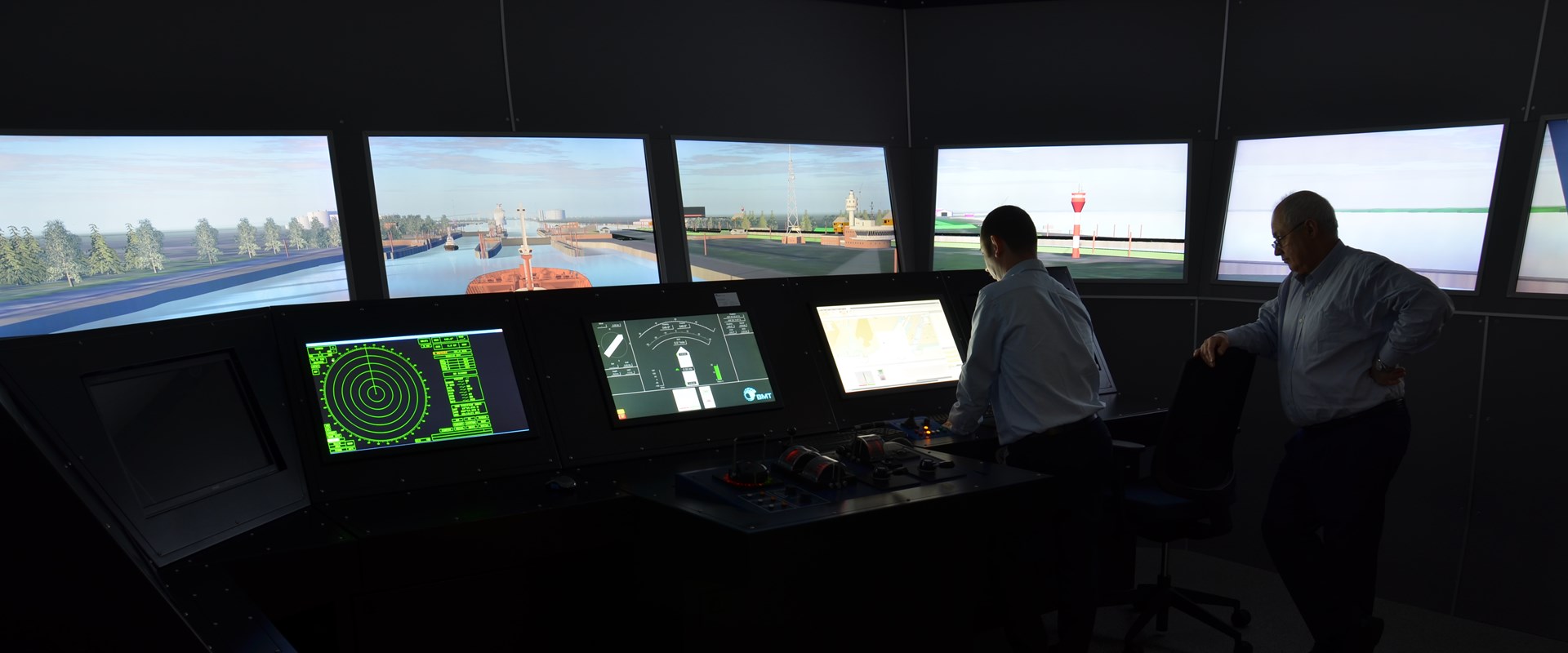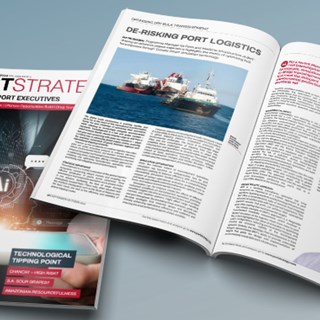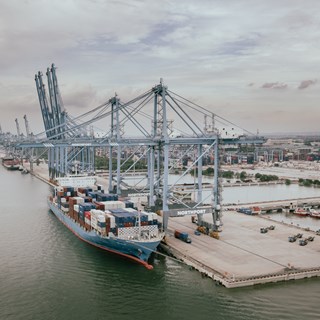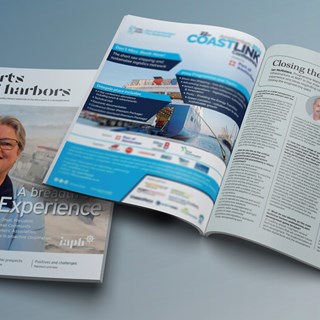
Smart port software
Phil Thompson, Director, Simulation & Training Products, Critical Infrastructure, explains how software helps to ensure safe navigation in congested water spaces.
16 April 2019
* A version of this article was originally published with The International Associates of Ports and Harbors
Over at least the next two or three decades, it is highly likely that ships with varying degrees of autonomy will be navigating alongside crewed vessels, which raises new challenges for the maritime industry. Innovative solutions will be needed in collision avoidance, ship and shore communications, human factors, mariner and pilot training, cyber security, insurance, and liability.
For autonomous navigation and collision avoidance, introducing new software and hardware on board vessels is bound to cause legal issues. For instance, software suppliers will risk becoming liable for navigation under regulations on prevention of collision at sea (COLREGS) based on algorithms developed by them.
The answers to this and other questions are unlikely to be addressed quickly, given the relatively slow pace of the International Maritime Organization (IMO). In contrast, national legislators can move much faster as international conventions allow for federal exemptions.
"One of the ... requirements for autonomous vessels is that they should navigate safely and avoid collisions."
Various nations will likely follow Norway's example of paving the way for local deployment of autonomous vessels before they make their way into international waters. As the commercial case for small autonomous vessels is also vital for coastal and inland waters vessels, disruption will likely start in more restricted waterways such as ports and inland waterways.
One of the basic requirements for autonomous vessels is to navigate safely and avoid collisions with any other ships/obstacles or with a land mass. Furthermore, to operate harmoniously with other ships – either human-crewed or uncrewed – an autonomous vessel should behave like that of other boats in the vicinity. Since all crewed craft are required to adhere to the coastguard COLREGs defined by the IMO, COLREGs-compliant behaviour will be an integral element of any autonomous vessel navigation system.
Research by companies such as Rolls-Royce and BMT has demonstrated the application of new algorithms that allow existing COLREGs to be applied safely in a crewless environment, which has been achieved by introducing artificial intelligence (AI)-based navigation systems that can effectively enact the rules to avoid a collision, even when approaching manned vessels that interpret laws differently. Most of these software developments incorporate some form of multi-objective optimisation framework, using particle swarm optimisation (PSO). PSO has been adopted in broader computational science utilising the position and velocities of proximate objects to simulate social behaviour, such as the movement of bird flocks or fish schools.
With various industrial partners, including UK pilots' representatives and an autonomous vessel designer, BMT has adapted the REMBRANDT navigation simulator to incorporate COLREGS-compliant AI decision-making for autonomous vessel hydrodynamic simulation. This development has been funded through the Innovate UK Shared Waterspace Autonomous Navigation System (SWANS) programme. BMT is also involved in a parallel Innovate UK programme, Synthetic Imagery training for Machine Vision in Extreme Environments (SIMVEE). This second programme funds new machine vision developments to supplement the REMBRANDT COLREGS-compliant AI systems developed in SWANS. Both programmes provide enhanced situational awareness and risk evaluation by fusing collision avoidance algorithms with vessel-specific manoeuvrability and seakeeping simulation.
REMBRANDT is a Windows-based, time-domain navigation and seakeeping simulation software application. It is fully scalable and designed to run in complete mission and single/multiple desktop modes. It also has various user controls needed to simulate conventional vessels and vessels with varying levels of autonomy.
It is installed in pilots' and ship operators' offices, training centres, and onboard ships. Autonomous vessel designers and operators also use it.
The AIS-enabled system allows real-time displays of live traffic as part of an autonomous and manned vessel simulation. REMBRANDT incorporates various user-configurable controls to allow for multiple environmental conditions. These include day and night screens, reduced visibility, multidirectional swells, and complex current flows. Visual topography, including bathymetric representation, is automatically generated from the ENC chart.
The system includes an extensive database of fully calibrated hydrodynamic ship models of conventional and autonomous vessels.
Physical phenomena such as squat, bank effects, and ship-ship interaction are included to extend applications to collision avoidance in inland waterways. This new generation of software can be used to explore future scenarios that comprise a growing mix of crewed, part-autonomous, and fully autonomous vessels in and around port areas, which allows a better understanding of risks associated with
For example, the REMBRANDT software is currently being used as part of more comprehensive UK studies looking at the effect on the loss of individual vessel ship and shore communications and area-wide GPS.
The future challenge will be for AI navigation algorithms to detect and quantify deliberate GPS spoofing and compensate accordingly, requiring real-time or near real-time processing of the available data. Other ongoing work involves simulating rudder and engine failure of autonomous vessels and identifying what actions are needed from the autonomous boat. At the same time, drift predictions highlight effects on broader port operations and traffic.
Future scenario testing described above is currently ongoing within the Innovate UK SWANS and SIMVEE programmes and will be reported in detail over the coming months.

Since joining BMT in 1992, Phil has held various managerial and executive appointments within BMT’s global management consultancy. He currently leads the Simulation and Training Services business at BMT.
His extensive work in e-Navigation, Traffic Simulation, Digital Twinning and Digital Reconstruction Forensics has led to the world’s leading ship operators and statutory marine accident investigation bodies to adopt BMT navigation simulators for port planning and navigation training. Users include Shell, the U.S. National Transportation Safety Board and counterparts in the U.K., Australia and the Netherlands. Phil is also currently leading a number of joint industry developments in Autonomous Surface Vessels, Artificial Intelligence, Deep Learning and Machine Vision Capabilities and the impacts on Future Port Design.
Phil has held several Directorships with the Transport, Offshore and Marine Surveys divisions at BMT. Prior to joining BMT, he worked in underwater acoustics at BAE Systems and as a Professor at the Department of Aerospace and Ocean Engineering at Virginia Tech, U.S.A.
He has received a Civil and Structural Engineering doctorate from Newcastle University and an MBA from Durham University. Phil is registered as a Chartered Director with the UK’s Institute of Directors.

N/A
The DCN spoke to our climate change risk, resilience and adaptation expert about preparing for the impacts of a changing climate.

Ian McRobbie
In a Port Strategy feature, Ian McRobbie highlights the merits of optimising bulk transshipment through ‘Climate-Smart’ simulation technology, drawing on extensive project experience

Jaret Fattori
Jaret Fattori's article in Port Strategy discusses how ports are adapting to climate change and IFRS S-2 regulations. Emphasising the shift towards sustainability through digital integration, decarbonisation, and innovative fuel alternatives, he explores the significant role of collaboration in advancing port sustainability and innovation.

Ian McRobbie
Ian McRobbie, our Programme Manager for Ports and Maritime Infrastructure, was interviewed by Port & Harbors to discuss how infrastructure companies are collaborating with ports to enhance port infrastructure and operations.